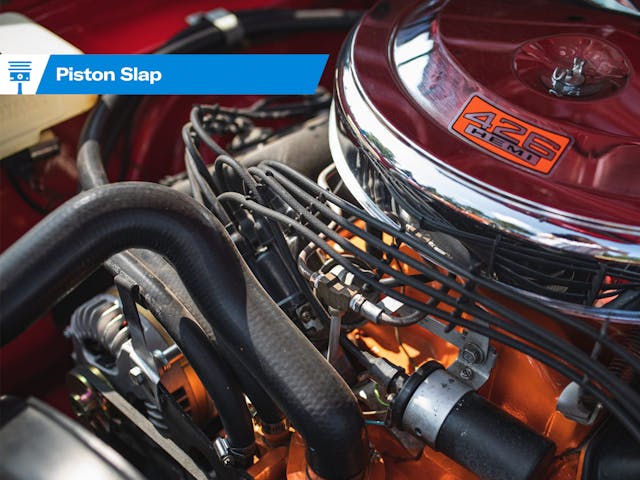Piston Slap: 426 Hemi vs. ballooning torque convertor?
Dave writes:
I have a Dodge Dart with a 426 Gen-II Hemi and a 727 auto transmission. During the summer of 2018, I started having some issues and also started to diagnose them. Long story short, I found that the rear wall of the thrust bearing was compromised. I built this motor, and I’d put 7500 miles of spirited street driving on it in the prior eight years. No drag racing, with very few from-a-stop burn outs! The build started with a new block that was manufactured in 2005 (mega-block from Mopar Performance).
I lucked out in the fact that nothing was ruined due to this failure. I did end up having the block line honed to make sure it was correct. Other than that it was a standard check and renew/replace type of rebuild. It is now on my run stand, and it’s been run numerous times this fall. Transmission was also checked and rebuilt, and nothing unusual was found. The only things not checked yet are the drive shaft, to ensure it isn’t too long, and the torque converter, to make sure it hasn’t ballooned. Two questions: What might have caused this issue, and do you recommend checking anything I haven’t mentioned? I am 69 years young and not wanting to do this again!
Sajeev answers:
Oh, boy, talk about a tough one to diagnose. Worn-out thrust bearings either suggest a poorly machined block/crankshaft, or something that bolts to the front or back of the engine applying undue pressure to the crankshaft. Even worse, this isn’t as easy to diagnose as a manual transmission vehicle (i.e. push in the clutch and watch the crank pulley for movement), but odds are the same area of concern is applicable to your automatic-equipped Dart.
It could be that the torque convertor was incorrectly spaced during installation. As I have zero personal experience in this, perhaps it’s time to turn to a video for a better explanation of the problem.
A quick check of a Mopar forum suggests this video’s specs are a little off for a Chrysler 727, but I would ditch the Internet and talk to a local rebuilder to get the correct spec. The aforementioned driveshaft is worth checking, especially if your Dart didn’t come with this engine and transmission from the factory (i.e. someone made a custom shaft to fit).
If all the dimensions are correct, perhaps there is too much line pressure causing torque convertor ballooning. This can happen from using incorrectly-sized lines to the cooler, kinked lines, aftermarket modifications, etc. that increase line pressure and eventually turn the torque convertor into a thrust bearing eater. Again, another chat with a local transmission expert is in order.
Fingers crossed! Best of luck with the inspection and repair.
Have a question you’d like answered on Piston Slap? Send your queries to pistonslap@hagerty.com, give us as much detail as possible so we can help! If you need an expedited resolution, make a post on the Hagerty Community!


